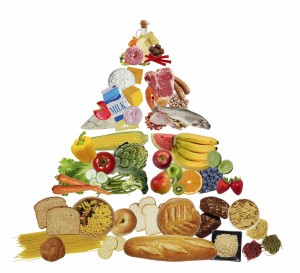Here are 7 tips for smarter snacking.
- Try a “hi-low” combination. Combine a small amount of something with healthy fat, like peanut butter, with a larger amount of something very light, like apple slices or celery sticks.
- Go nuts. Unsalted nuts and seeds make great snacks. Almonds, walnuts, peanuts, roasted pumpkin seeds, cashews, hazelnuts, filberts, and other nuts and seeds contain many beneficial nutrients and are more likely to leave you feeling full (unlike chips or pretzels). Nuts have lots of calories, though, so keep portion sizes small.
- The combo snack. Try to eat more than one macronutrient (protein, fat, carbohydrate) at each snacking session. For example, have a few nuts (protein and fat) and some grapes (carbohydrates). Try some whole-grain crackers (carbohydrates) with some low-fat cheese (protein and fat). These balanced snacks tend to keep you feeling satisfied.
- Snack mindfully. Don’t eat your snack while doing something else like surfing the Web, watching TV, or working at your desk. Instead, stop what you’re doing for a few minutes and eat your snack like you would a small meal. In addition, it is important to avoid snacking to compensate for boredom or cope with stress. Some things you can try instead are going for a small walk around your block or having a big glass of water.
- Take only a serving size. One area of struggle for some comes when they eat out of a bag for example. By pouring a serving size worth of your treat or snack into a bowl, it makes it easier to eat only as much as you should, without over – indulging.
- You can take it with you. Think ahead and carry a small bag of healthful snacks in your pocket or purse so you won’t turn in desperation to cookies or chocolate bars when out and about.
Have you benefitted from reading this blog? Know someone that would benefit as well? Share, Like, Comment, or Tweet this article, and let me know what you think.
Some of the information provided above may not be appropriate for everyone, please consult with your doctor before trying any of the above. If you are interested in Naturopathic Medicine and wanting a different approach to your health care needs, please contact Elisha Cook for more information.


